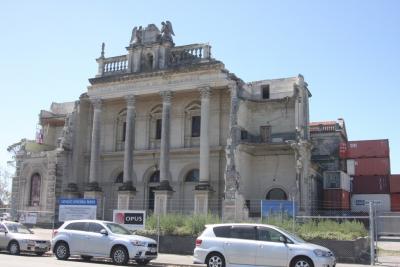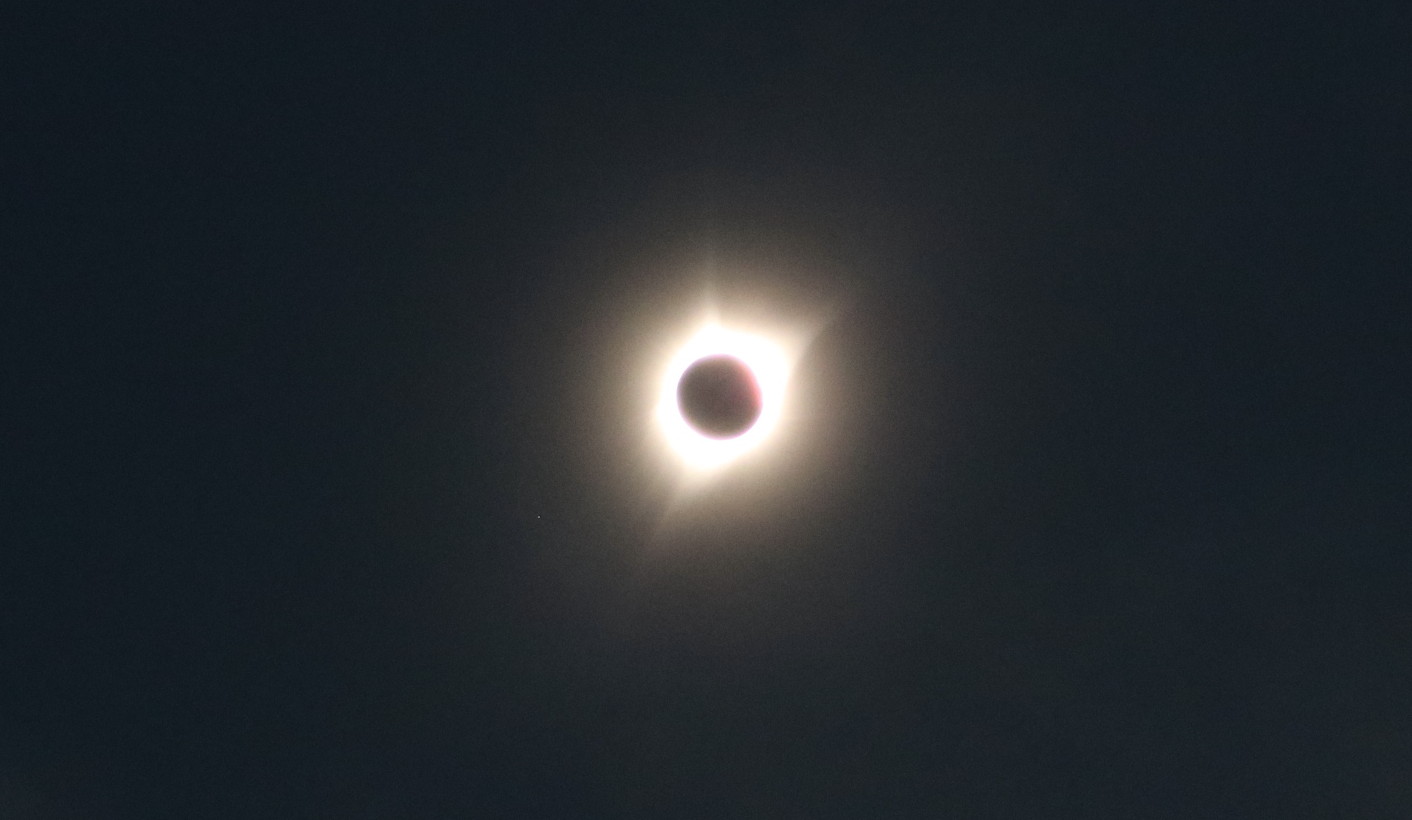Christchurch – The Rebuild Tour
 Our second day of touring Chirstchurch we chose to take a tour sponsored by the Canterbury Museum. Titled the Rebuild Tour, this bus trip through downtown Christchurch showed us much of the destruction of two earthquakes, September 4, 2010 Magnitude 7.1 and six months later on February 22, 2011 at Magnitude 6.3, which literally wrecked the city of Christchurch. The theme of the trip was the effort to rebuild the city with building codes that would help the city withstand further earthquakes. Even as we waited for bus at the bus stop near our holiday park, many miles from downtown Christchurch, we could look across the street at a stone and brick church which had obvious damage, missing ornamental stones and a pair of large metal braces holding up the front wall of the church.
Our second day of touring Chirstchurch we chose to take a tour sponsored by the Canterbury Museum. Titled the Rebuild Tour, this bus trip through downtown Christchurch showed us much of the destruction of two earthquakes, September 4, 2010 Magnitude 7.1 and six months later on February 22, 2011 at Magnitude 6.3, which literally wrecked the city of Christchurch. The theme of the trip was the effort to rebuild the city with building codes that would help the city withstand further earthquakes. Even as we waited for bus at the bus stop near our holiday park, many miles from downtown Christchurch, we could look across the street at a stone and brick church which had obvious damage, missing ornamental stones and a pair of large metal braces holding up the front wall of the church.
For a little background, New Zealand is a divided country. It isn’t divided politically, it is divided geologically. The North Island is part of the Australian Plate, a continental mass of rock which is overriding the Pacific Plate and this produces volcanoes and hot springs which are typical of the North Island. The South Island lies on the Pacific Plate which is sliding past the Australian Plate in a way that crumples up mountains. The South Island has a series of mountain ranges running the length of the island on the western side of the island. This crumpling produces not only growing mountains but also earthquakes as the stresses lifting the mountains are occasionally relieved.
Christchurch is no stranger to earthquakes but these two very strong earthquakes coming in quick succession dealt a terrible blow to the city. Dozens of buildings collapsed partially or completely. One recently built building pancaked killing over 100 people. Investigators are still probing the cause of this catastrophic failure of a modern building. Older stone and brick buildings fared little better. Many commercial, municipal buildings, stadiums, museums, churches and cathedrals were damaged beyond repair. Most of these buildings have already been razed while other are still the subject of debates as to whether to try to restore them or to simply tear them down. You can identify the buildings which are in this state by the reinforcing braces holding up walls and fences blocking access to the buildings.
Whole sections of the city near the Avon River were damaged when the water soaked soil became liquefied by the shaking action of the earthquakes. When this happens, buildings which have a foundation on the soil suddenly begin to sink into the ground. This usually doesn’t happen smoothly. Some parts of a building may sink faster than others. This will tilt the building or may cause part to collapse while another part remains standing. A large residential area will be destroyed because of this phenomenon. Some of the homes are relatively undamaged but the dangerous soil conditions in the area require closing the whole area to existing and future buildings.
We were taking the tour on February 26, just four days after the anniversary of the 2011 earthquake. Our guide described the feelings of Christchurch residents about the earthquakes and the lingering fear they experience, a genuine post-traumatic stress syndrome. Ties to beautiful and familiar buildings are hard to break and reaching decisions on what to do about damaged buildings and how to rebuild new buildings are all mixed up in their emotional state. With destruction and construction everywhere, streets are closed or partially blocked by orange cones so the reminder is there in every daily activity. Three years after the last earthquake, many residents of Christchurch are still waiting for the insurance companies to settle their claims.



0 Comments
Recommended Comments
There are no comments to display.
Please sign in to comment
You will be able to leave a comment after signing in
Sign In Now